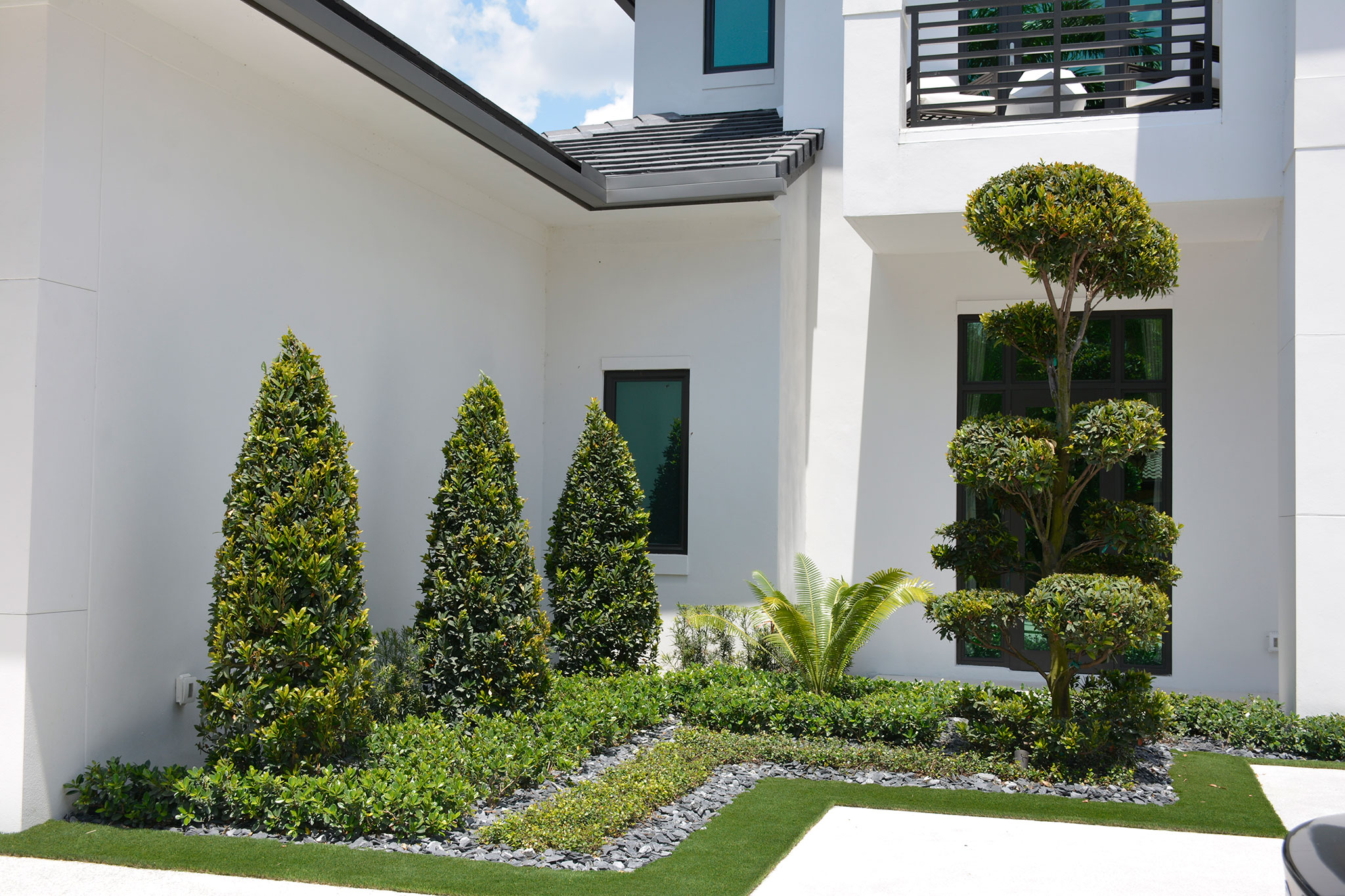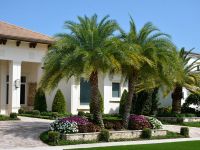Trees and Bushes
Trees and bushes play a crucial role in landscape design, offering a range of aesthetic, functional, and environmental benefits. Here’s an overview of their appeal in landscape design:

1. Aesthetic Appeal: Trees and bushes bring beauty and visual interest to outdoor spaces. They provide a sense of scale, texture, and color, adding depth and dimension to the landscape. Different tree species showcase unique characteristics, such as flowering trees that offer bursts of color or evergreen trees that provide year-round foliage. Bushes and shrubs offer versatility in terms of size, shape, and foliage, allowing for creative design arrangements and the creation of distinct garden areas.
2. Privacy and Screening: Trees and bushes can serve as natural barriers, providing privacy and screening from neighboring properties or undesirable views. Taller trees with dense foliage create a sense of seclusion, while bushes can be strategically placed to create visual barriers and define outdoor living spaces.
3. Shade and Energy Efficiency: Trees are excellent providers of shade, helping to reduce the heat and glare from the sun. Well-placed trees can shade outdoor seating areas, patios, and windows, making them more comfortable during hot summer months. By providing shade, trees contribute to energy efficiency by reducing the need for excessive cooling and lowering energy costs.
4. Wildlife Habitat: Trees and bushes serve as habitats for birds, butterflies, and other wildlife, bringing life and biodiversity to the landscape. They provide nesting sites, food sources, and shelter, attracting a variety of wildlife that enhances the ecological balance of the area.
5. Erosion Control and Stormwater Management: The extensive root systems of trees and the dense growth of bushes help prevent soil erosion by holding the soil in place. They also play a vital role in stormwater management, absorbing and filtering rainwater, reducing runoff, and minimizing soil erosion and water pollution.
6. Sound Barrier: Trees and bushes can help mitigate noise pollution by acting as natural sound barriers. Their foliage and branches absorb and deflect sound, reducing the impact of nearby traffic or other disruptive noises, creating a more peaceful environment.
7. Environmental Benefits: Trees and bushes contribute to a healthier environment. They absorb carbon dioxide and release oxygen, helping to improve air quality. They also provide shade, reducing the urban heat island effect and improving the microclimate of the surrounding area.
Trees and Bushes Image Gallery
Click on the images to see a larger image.
When incorporating trees and bushes into landscape design, it’s important to consider factors such as the climate, soil conditions, growth habits, and maintenance requirements of different species. Proper placement, spacing, and selection of trees and bushes are essential to ensure they thrive and complement the overall design.
In conclusion, trees and bushes offer numerous benefits and appeal in landscape design. They enhance the aesthetics, provide privacy, shade, and wildlife habitat, control erosion, manage stormwater, act as sound barriers, and contribute to a healthier environment. Integrating trees and bushes into a well-designed landscape can create a visually stunning and sustainable outdoor space.










